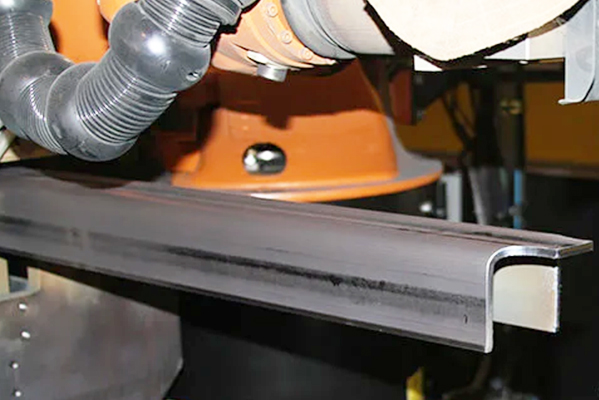Navigation Menu
Contact Us
- Email:
- info@wxavatar.com
- Address:
- Yurong Village, Yuqi Street, Huishan District, Wuxi, China.
Release Date:Jun 04, 2025 Visit:43 Source:Roll Forming Machine Factory
The railroad industry relies on precision, durability, and efficiency in manufacturing components that ensure safe and reliable rail operations. Among the various production methods, roll forming equipment has emerged as a key technology in shaping high-quality railroad components. This process offers several advantages that enhance production efficiency and product performance.

The Role of Roll Forming in Railroad Components Manufacturing
Roll forming is a continuous bending operation where long strips of metal are passed through sets of rolls to achieve a desired cross-sectional profile. This method is particularly well-suited for producing railroad components such as:
Railroad tracks and rails
Tie plates and fastening systems
Signaling and support structures
Carriage and bogie components
Compared to traditional manufacturing techniques like extrusion or stamping, roll forming provides a more efficient and cost-effective solution for high-volume production.
Key Benefits of Roll Forming Equipment in Railroad Production
1. Precision and Consistency
Roll forming ensures uniform dimensions and tight tolerances, which are critical for railroad components that must meet strict industry standards. The automated process minimizes human error, resulting in consistent product quality.
2. High-Speed Production
Since roll forming is a continuous process, it allows for faster production rates compared to other metal-forming methods. This efficiency helps manufacturers meet large-scale demand without compromising quality.
3. Material Efficiency
The process minimizes material waste by utilizing coiled metal strips, reducing scrap and optimizing raw material usage. This contributes to lower production costs while maintaining structural integrity.
4. Flexibility in Design
Roll forming equipment can be adjusted to produce a variety of profiles, making it ideal for custom railroad components. Manufacturers can easily modify roll configurations to accommodate different specifications.
5. Enhanced Strength and Durability
The cold-forming process used in roll forming work-hardens the metal, improving its strength and resistance to wear—a crucial factor for railroad components exposed to heavy loads and harsh conditions.
The Future of Railroad Components Equipment
As the demand for efficient rail transport grows, advancements in roll forming technology continue to play a significant role in modernizing railroad components production. Innovations such as computer-controlled roll forming systems and automated quality checks further enhance precision and productivity.
Manufacturers investing in advanced roll forming equipment are better positioned to deliver high-performance railroad components that meet evolving industry needs. This technology not only streamlines production but also ensures the long-term reliability of rail infrastructure.
Conclusion
Roll forming equipment has become a cornerstone in the production of railroad components, offering precision, efficiency, and cost-effectiveness. As the railroad industry evolves, this manufacturing method will remain essential in meeting the demand for durable and high-quality rail systems.

By leveraging modern roll forming technology, manufacturers can continue to advance railroad components equipment, supporting safer and more efficient rail networks worldwide.